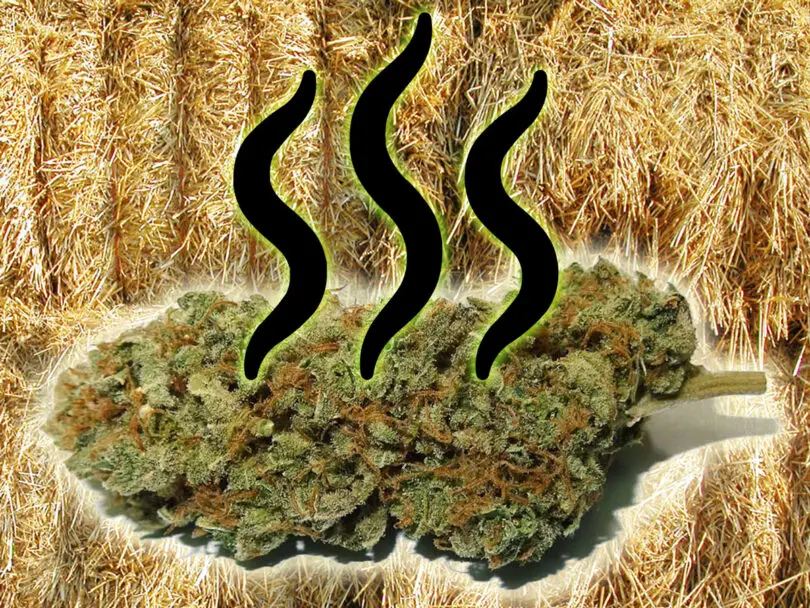Hay has a sweet, earthy scent that resembles freshly cut grass or dried herbs. It evokes a sense of the countryside and can be reminiscent of summertime.
Hay’s fragrance is a result of the plant’s natural oils and compounds. Hay is best known for its distinctive aroma, which can transport you to wide open fields and rolling meadows. The scent of hay is often described as sweet and earthy, similar to freshly cut grass or dried herbs.
It carries the essence of nature, with hints of sunshine and greenery. Whether you encounter it in a barn, at a farm, or even in a decorative hay bale, the smell of hay instantly brings to mind images of rural landscapes and idyllic countryside scenes. This familiar fragrance is created by the natural oils and compounds found in the plant. So, if you ever come across hay, take a deep breath and let its sweet aroma whisk you away to simpler times and scenic pastures.
Understanding The Fragrance Of Hay
Hay has a distinct fragrance that varies depending on the type of hay you encounter. The scent is a natural result of the plant’s composition, moisture levels, and processing methods. Alfalfa hay tends to emit a sweet, earthy aroma, while Timothy hay carries a subtle grassy smell.
The freshness and quality of the hay can greatly influence its fragrance. Properly cured and dried hay will have a pleasant, clean scent, whereas damp or moldy hay may have an unpleasant odor. Other factors that can impact the smell include the age of the hay, the presence of flowers or herbs in the mix, and any added preservatives.
Understanding these factors can help you identify the different scents of hay and choose the best option for your needs.
Hay As A Pleasing Combination Of Earthy And Sweet
Hay carries a distinct fragrance that combines the earthy scent of freshly cut grass with sweet undertones. The smell of freshly cut hay brings to mind pastoral scenes of rolling fields and vibrant meadows. It is a scent that evokes a sense of warmth and nature.
The earthy aromas come from the dried grasses, while the sweet undertones add a touch of sweetness to the overall fragrance. This pleasing combination of earthy and sweet makes hay an inviting scent that many find comforting and nostalgic. Whether encountered in a field or in a barn, the smell of hay is an unmistakable reminder of the natural world and its abundance.
Different Varieties Of Hay And Their Distinct Scents
Alfalfa hay emits a rich, sweet aroma, underscored by potent herbal notes. The scent is distinctive and easily recognizable. On the other hand, Timothy hay exudes a fresh, grassy scent with a mild sweetness. The fragrance is reminiscent of a meadow after a light rain.
Lastly, clover hay carries a delicate and slightly floral fragrance that adds a touch of elegance. Each variety of hay offers a unique olfactory experience that caters to different preferences. Whether you prefer the potent herbal notes of alfalfa, the fresh grassy scent of Timothy, or the delicate and floral fragrance of clover, the smell of hay is sure to transport you to a tranquil countryside.
So next time you come across bales of hay, take a moment to sniff and savor the distinctive scents that nature has to offer.
Factors Influencing Hay’s Fragrance
Hay’s fragrance is influenced by several factors. One crucial aspect is the stage of growth. As hay matures, its smell can vary significantly. Storage methods also play a vital role. The way hay is stored and handled can impact its aroma.
Additionally, weather conditions and climate play a part in the scent of hay. Different weather patterns can affect the drying process and result in varying fragrances. Understanding these factors can provide insight into the diverse smells of hay. So, the next time you encounter hay, take a moment to appreciate its unique fragrance and consider the factors that have influenced its smell.
Evaluating The Quality Of Hay Based On Smell
The smell of hay is a crucial factor in evaluating its quality for livestock and horses. A fresh and clean hay scent indicates that it is free from mold or spoilage. Recognizing these signs is essential to ensure the well-being and health of the animals.
Moldy or spoiled hay can pose serious health risks, causing respiratory problems and other complications. Livestock and horses rely on good quality hay for their nutrition and overall wellness. Therefore, it is important to carefully assess the fragrance of hay before feeding it to them.
By being aware of the scent and recognizing any signs of mold or spoilage, farmers and horse owners can provide their animals with the best possible feed, promoting their health and vitality.
The Cultural Significance Of The Smell Of Hay
Hay has a distinct smell that can hold great cultural significance. Across different societies, literature and art often capture the fragrance of hay. Its scent evokes sensory experiences and stirs up feelings of nostalgia. The aroma of hay can transport us to rustic countryside scenes, reminding us of summer days and the harvest season.
In literature, hay’s fragrance is often described as sweet, earthy, or even dusty. Artists have also depicted hay in various forms, conveying its distinct smell through their visual interpretations. Whether it is the image of a haystack in a landscape painting or the mention of hay in a poem, these representations serve as cultural markers, preserving the memory and essence of hay’s unique scent.
Tips For Preserving The Naturally Refreshing Smell Of Hay
Preserving the naturally refreshing smell of hay requires proper storage techniques. One essential tip is to ensure that the hay is stored in a well-ventilated area. Proper airflow helps to keep the hay dry and prevents the growth of mold or mildew that could affect its smell.
It’s also important to stack the hay in a tidy manner, allowing for easy inspection and quick removal if any signs of odor are present. Additionally, keeping the hay away from direct sunlight and excessive moisture will help maintain its natural aroma.
Regularly checking the hay for any signs of dampness or decay is crucial, as prompt action can prevent the spread of odors. Taking these precautions will ensure that the hay’s natural fragrances remain intact for an extended period, enhancing the overall experience and quality.

Credit: reefertilizer.com
Exploring Alternative Uses Of Hay’s Fragrance
Hay’s fragrance is unique and distinctive, evoking images of warm summer days and freshly cut grass. This natural scent has found its way into various products, such as perfumes and candles, offering a nostalgic and calming experience. Hay-scented products have gained popularity in the field of aromatherapy, as the fragrance is believed to promote relaxation and relieve stress.
The therapeutic benefits of these products make them a popular choice for creating a soothing atmosphere in homes and spa environments. Whether it’s through inhaling the scent or using hay-scented products topically, many individuals find solace and tranquility in the aromatic essence of hay.
Discover the beauty and therapeutic effects of hay’s fragrance and explore the diverse range of products inspired by this timeless scent.
Frequently Asked Questions
What Should Good Hay Smell Like?
Good hay should have a pleasant, fresh odor without any signs of mold or mustiness.
What Is The Odor Of Fresh Hay?
The odor of fresh hay is a distinct and pleasant smell that is often described as sweet and grassy.
What Does Wet Hay Smell Like?
Wet hay smells musty and moldy, with a damp and earthy odor.
Does Hay Have A Sweet Smell?
Yes, hay can have a sweet smell.
Conclusion
The smell of hay is a distinctive yet comforting aroma. It is earthy, sweet, and often has hints of grass and dried flowers. Whether you come across freshly cut hay on a warm summer day or open a bale during the winter months, the scent immediately transports you to the countryside and evokes fond memories.
The unique smell of hay is not only pleasant to many individuals, but it also serves as a reminder of nature’s abundance and the hard work of farmers. So next time you catch a whiff of hay, take a moment to appreciate the sensory experience and the connection it creates between you and the natural world.
Whether you associate it with hayrides, horse stables, or simply the joys of being outdoors, the smell of hay has the power to bring a little piece of nature into your day.








